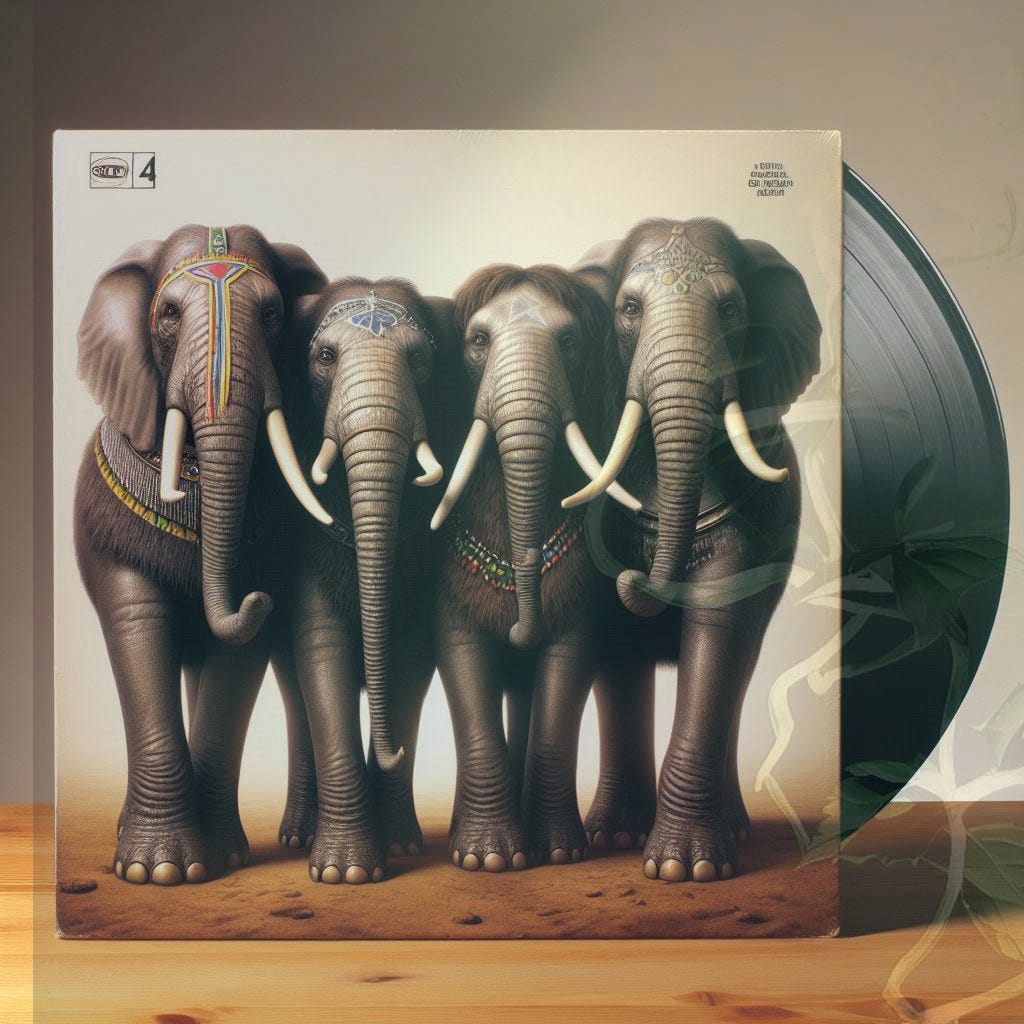S15, E7: Mammal Mia! Here We Grow Again
Series 15: How to Remain Blameless while Calling BS on 'No Free-Will'
Did you ever see an elephant fly
Well I seen a horse fly
I seen a dragon fly
I seen a house fly
I seen all that too
I seen a peanut stand
And heard a rubber band
I seen a needle that winked its eye
But I've been, done, seen about everything
When I see a elephant fly
“When I See an Elephant Fly”, soundtrack of the Disney movie “Dumbo”, 1941 (Cliff Edwards, Jim Carmichael, The Hall Johnson Choir) Songwriters: Ned Washington, Oliver George Wallace.
The reason an elephant can’t fly is not just that ears don’t make suitable aerofoils, but that there was no survivability requirement for the evolution of flight capability, without that no creature flies. Had there been an emerging survival need for elephants to be airborne, they would have quickly become extinct - it’s a capability that is not scalable for elephants.
Determinists frequently disregard the importance of scalability and assume there should be a bottom-up explanation for everything - yes those things are related. Certainly, as far as we know the physical universe is comprised entirely of particles and, depending on your point of view, these will one day be describable in terms of strings and their harmonics, or wishful thinking. Yet knowing this does not help us understand anything about reality at the scale we experience it in normal life.
The useful bottom-up model of living things is that they are vehicles for genes. We carry them everywhere, but rather than steering us from place to place, they are navigating down the generations. The vehicle must therefore provide survival benefits, and to make sense of that, we need a top-down model of how the environment acts on the phenotype.
I argue that at the pinnacle of evolutionary development, survivability is optimised by consciousness and free-will, because it enables us to navigate and respond to our environment in real-time.
So if a person decides to go for a walk, it’s not really useful to attempt an explanation by using an genetic bottom-up model or, a top-down survivability one. Am I saying they are disconnected? No I am saying the linking factor is the emergence of consciousness and free-will. It enables thought and culture and Richard Dawkins’ meme concept which I discuss in another series.
The Denial of Intermediate Prime Movers
Free-Will Sceptics (FWS) assume there to be a continuous unbroken chain of cause and effect in human affairs, in principle traceable to the big bang, with no intermediate prime movers. My counter to that is that free-will is a prime mover manufactured by biological processes using the raw ingredients of energy and information. In this piece I touch on abstractions for the brain, consciousness, free-will and group behaviour in preparation for a discussion about prime movers in the next episode.
For now let me point out that in engineering terms a motor in a car (combustion engine or electric) is a prime mover. It creates rotary motion from its onboard source of energy. Of course, we would not expect (or want) a car to unilaterally decide to start its engine because that decision is reserved for a human being. However humans (and other animals) are self-starting entities, drawing energy from their environment via biological processes and using it to navigate their lives. I will dismantle the determinist objections to this in the rest of this series.









Paul MacLean’s triune brain theory posits that the structure of the modern human brain is comprised three brains, each of which marks a major stage in our cognitive evolution, viz.
the reptilian brain (R-complex) i.e., basal ganglia or the brain stem
the mammalian brain (paleomammalian complex) from early mammals aka the limbic system (also named by Paul MacLean)
the neocortex (or neomammalian complex)
These respectively correspond to mechanisms for personal survival, our emotional experience and the intellectual functions most associated with what it means to be human.
Top-down and Bottom-up
It seems this has fallen out of favour with some neuroscientists, but regardless of the model used, the brain is best understood top-down as a confederacy of mutually influential specialist regions. This will also make sense to anyone with any understanding of distributed control systems.
For my purposes the triune model is a good way to think about function, command and control, plus how the hierarchy can adjust to circumstances. For example, impulse control is essential to social animals to keep base instincts in check, but sometimes primal drives take the lead when the individual’s survival is threatened.
Keep reading with a 7-day free trial
Subscribe to The Vigne Intervention to keep reading this post and get 7 days of free access to the full post archives.






